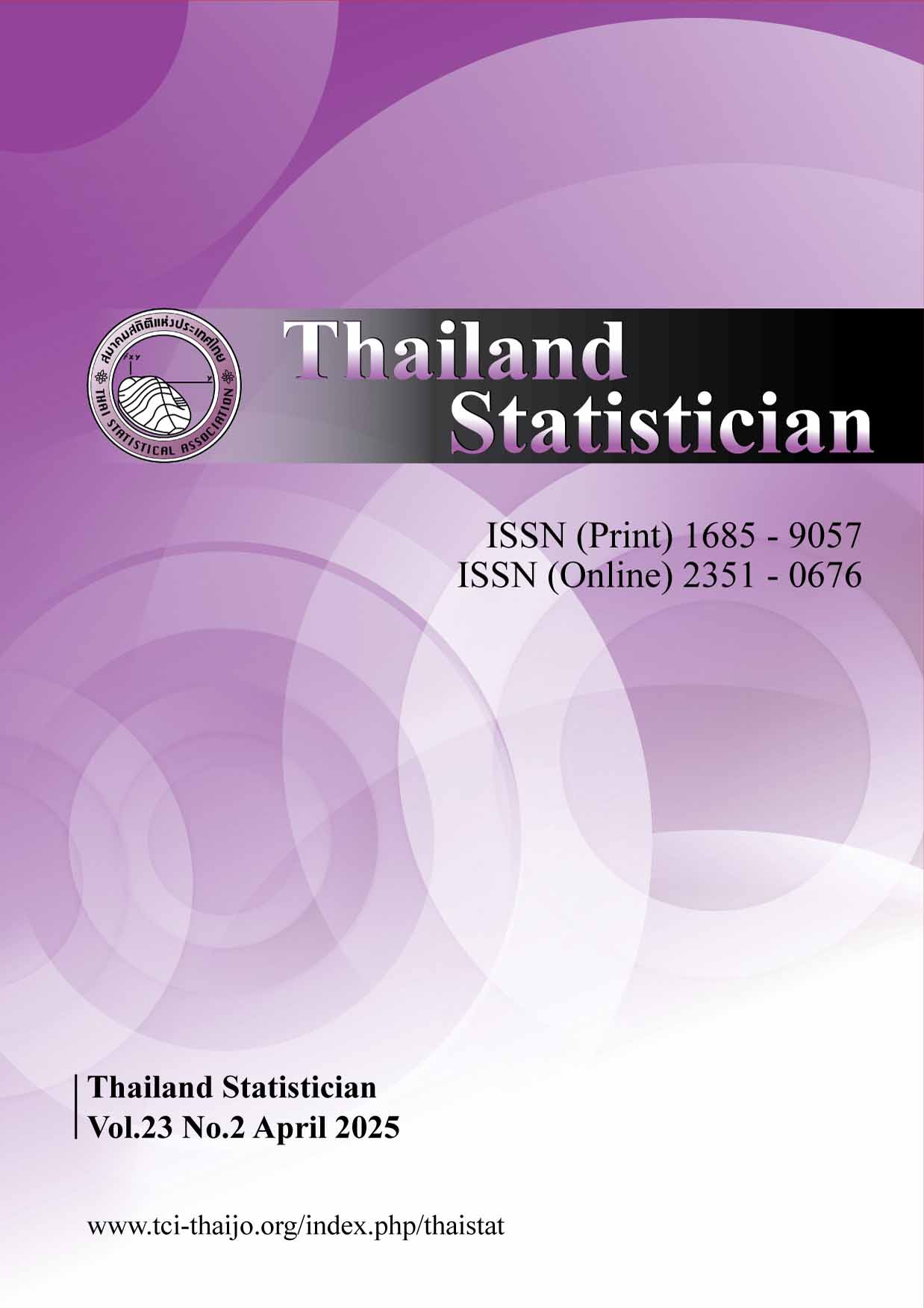Comparison of Methods Used for Estimation of Number of Factors for High Dimensional Factor-Augmented Functional-Coefficient Forecasting Models
Keywords:
Factor models, functional-coefficient models, number of common factors, eigenvalues, principal component analysisAbstract
Estimating the number of common factors is challenging particularly in nonparametric high dimensional time series model where the dimensions are bigger than the sample size being considered. In this article, we study the different techniques for determining the number of common factors which are considered in the context of reducing dimensions in the factor-augmented functional-coefficient model with high dimensions. The concept behind all the estimate techniques that are used in this research is based on the evaluation of eigenvalues derived from the correlation and covariance matrix. The performance of the estimators is compared using percentages and the average of the estimated factor numbers. The results of the simulation experiments showed that the growth rates of residual variances technique exhibits outstanding performance compared to other methods in situations when the dimension is greater than or equal to the large sample size. Nevertheless, both modified eigenvalues thresholding and the eigenvalue difference criterion techniques provide better results in comparison to other methods in cases when the dimension is smaller than the small sample size. This study employed an empirical approach, using an actual dataset of Australia's quarterly consumer price index (CPI) to provide evidence for the estimating techniques used for determining the factor number.
References
Ahn SC, Horenstein AR. Eigenvalue ratio test for the number of factors. Econometrica. 2013 May; 81(3): 1203-1227.
Bai J, Ng S. Determining the number of factors in approximate factor models. Econometrica. 2002 Jan; 70(1): 191-221.
Bühlmann P, Van De Geer S. Statistics for high-dimensional data: methods, theory and applications. Berlin: Springer Science and Business Media; 2011.
Cai T, Han X, Pan G. Limiting laws for divergent spiked eigenvalues and largest nonspiked eigenvalue of sample covariance matrices. Ann Stat. 2020; 48 (3): 1255-1280.
Cattell RB. The scree test for the number of factors. Multivariate Behav Res. 1966; 1(2): 245-276.
Chamberlain G, Rothschild M. Arbitrage, factor structure, and mean-variance analysis on large asset markets. Econometrica. 1983; 51(5): 1281-1304
Chen J, Li D, Linton O, Lu Z. Semiparametric ultra-high dimensional model averaging of nonlinear dynamic time series. J Am Stat Assoc. 2018; 113(522): 919-932.
Chongcharoen S, Paksaranuwat P, Kingphai K. One-sided multivariate test for two population means with common unknown covariance matrices of high-dimensional data. Thailand Statistician. 2022; 20(2): 412-419.
Choosawat C, Reangsephet O, Srisuradetchai P, Lisawadi S. Performance comparison of penalized regression methods in Poisson regression under high-dimensional sparse data with multicollinearity. Thail Stat. 2020; 18(3), 306-318.
Fama EF, French KR. The cross‐section of expected stock returns. J Finance. 1992; 47(2): 427-465.
Fan J, Guo J, Zheng S. Estimating number of factors by adjusted eigenvalues thresholding. J Am Stat Assoc. 2022; 117(538): 852-861.
Fan J, Lv J. Sure independence screening for ultrahigh dimensional feature space. J R Stat Soc Series B Stat Methodol. 2008; 70(5): 849-911.
Hallin M, Liška R. Determining the number of factors in the general dynamic factor model. J Am Stat Assoc. 2007; 102(478): 603-617.
Hastie T, Tibshirani R, Wainwright M. Statistical learning with sparsity: the lasso and generalizations. New York: CRC Press; 2015.
Jolliffe IT. Principal component analysis. Technometrics. 2003; 45(3): 276.
Kaiser HF. The application of electronic computers to factor analysis. Educ Psychol Meas. 1960; 20(1): 141-151.
Kapetanios G. A testing procedure for determining the number of factors in approximate factor models with large datasets. J Bus Econ Stat. 2010; 28(3): 397-409.
Kong XB, Liu Z, Zhou W. A rank test for the number of factors with high-frequency data. J Econom. 2019; 211(2): 439-460.
Lam C, Yao Q. Factor modeling for high-dimensional time series: inference for the number of factors. Ann Stat. 2012; 40(2): 694-726.
Li D, Tosasukul J, Zhang W. Nonlinear factor-augmented predictive regression models with functional coefficients. J Time Ser Anal. 2020; 41(3): 367-386.
Onatski A. Testing hypotheses about the number of factors in large factor models. Econometrica. 2009; 77(5): 1447-1479.
Onatski A. Determining the number of factors from empirical distribution of eigenvalues. Rev Econ Stat. 2010; 92(4): 1004-1016.
Downloads
Published
How to Cite
Issue
Section
License

This work is licensed under a Creative Commons Attribution-NonCommercial-NoDerivatives 4.0 International License.



